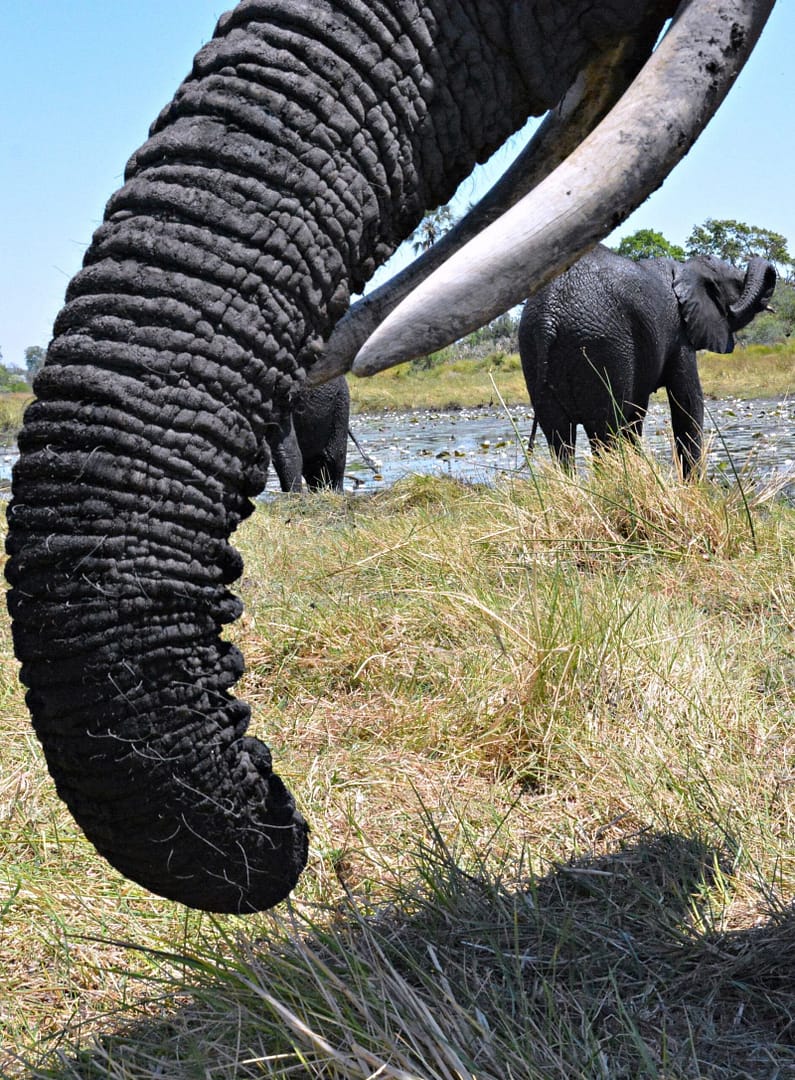Botswana, a landlocked nation in Southern Africa, is renowned for its vast wilderness areas and rich biodiversity. Among its most celebrated inhabitants is the African elephant, the largest terrestrial animal on Earth. With approximately 130,000 elephants, Botswana boasts the world’s largest elephant population, accounting for about a third of all African elephants.
The African Elephant: A Majestic Giant
African elephants are distinguished by their impressive size, with adults standing between 10 to 13 feet tall and weighing up to 7 tons. Their large ears, shaped somewhat like the African continent, help regulate body temperature by radiating heat. The versatile trunk serves multiple purposes, including smelling, breathing, trumpeting, drinking, and grasping objects. Both males and females possess tusks, which, unfortunately, have made them targets for poaching due to the high value of ivory.
Botswana’s Commitment to Conservation
Approximately 40% of Botswana’s land is dedicated to wildlife conservation, encompassing four national parks and nine protected areas. This extensive commitment provides a sanctuary for elephants and other wildlife to thrive. The country’s stable political environment and stringent anti-poaching measures have contributed significantly to the flourishing elephant population.
Challenges of Overpopulation
While the burgeoning elephant population is a testament to successful conservation efforts, it also presents challenges. Overpopulation can lead to habitat degradation, as large herds may overbrowse vegetation, affecting other species and the ecosystem’s overall health. Additionally, human-elephant conflicts have become more frequent, especially in areas where agricultural lands border elephant habitats.
Human-Elephant Conflicts
As elephants migrate in search of food and water, they often traverse farmlands, leading to the destruction of crops and property. For local communities, this can result in significant economic losses and pose safety risks. The Botswana government and various non-governmental organizations are actively working on strategies to mitigate these conflicts, such as creating wildlife corridors, implementing early warning systems, and promoting community-based natural resource management programs.
Conservation Strategies and Sustainable Management
To address the challenges posed by a large elephant population, Botswana has explored various management strategies. In 2019, the government lifted a five-year ban on elephant hunting, citing the need to control the population and reduce human-elephant conflicts. This decision sparked international debate, highlighting the complex balance between conservation and community livelihoods.
Community-based initiatives have also been pivotal. Programs that involve local communities in conservation efforts, such as eco-tourism and wildlife monitoring, have provided economic incentives to protect elephants and their habitats. These initiatives aim to foster coexistence and ensure that the benefits of conservation are shared with those directly affected by wildlife activities.
The Role of Eco-Tourism
Eco-tourism plays a crucial role in Botswana’s economy and conservation efforts. Tourists from around the globe visit Botswana to experience its pristine wilderness and observe elephants in their natural habitats. Destinations like Chobe National Park and the Okavango Delta are particularly popular for elephant sightings.
Revenue generated from eco-tourism supports conservation initiatives and provides livelihoods for local communities. However, it’s essential to manage tourism sustainably to minimize environmental impacts and ensure that wildlife is not disturbed.
The Future of Elephants in Botswana
Botswana’s elephants are a symbol of the country’s natural heritage and a cornerstone of its tourism industry. Ensuring their future requires a balanced approach that addresses ecological sustainability, economic development, and the well-being of local communities.
Ongoing research, adaptive management strategies, and international collaboration will be vital in navigating the complexities of elephant conservation. By fostering coexistence and promoting sustainable practices, Botswana aims to maintain its status as a sanctuary for elephants and a model for wildlife conservation.
In conclusion, Botswana’s relationship with its elephant population is multifaceted, encompassing conservation triumphs and challenges. Through continued commitment and innovative approaches, there is hope for a harmonious future where elephants and humans can thrive together.
Visit Botswana
Would you like to visit Botswana, but don’t know where to start and how to plan it, we got you. Read more here.

